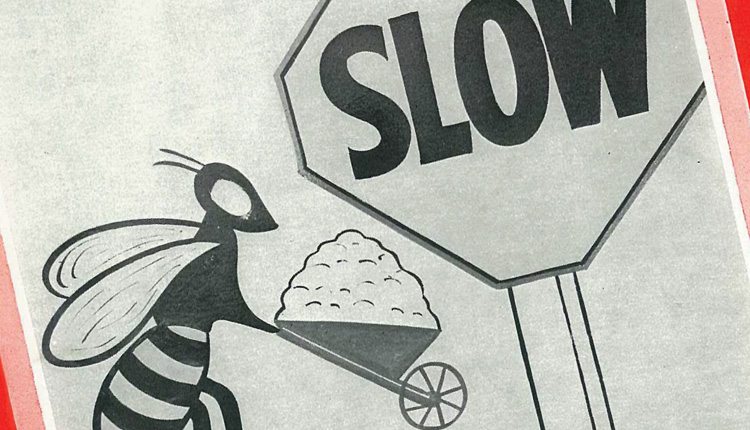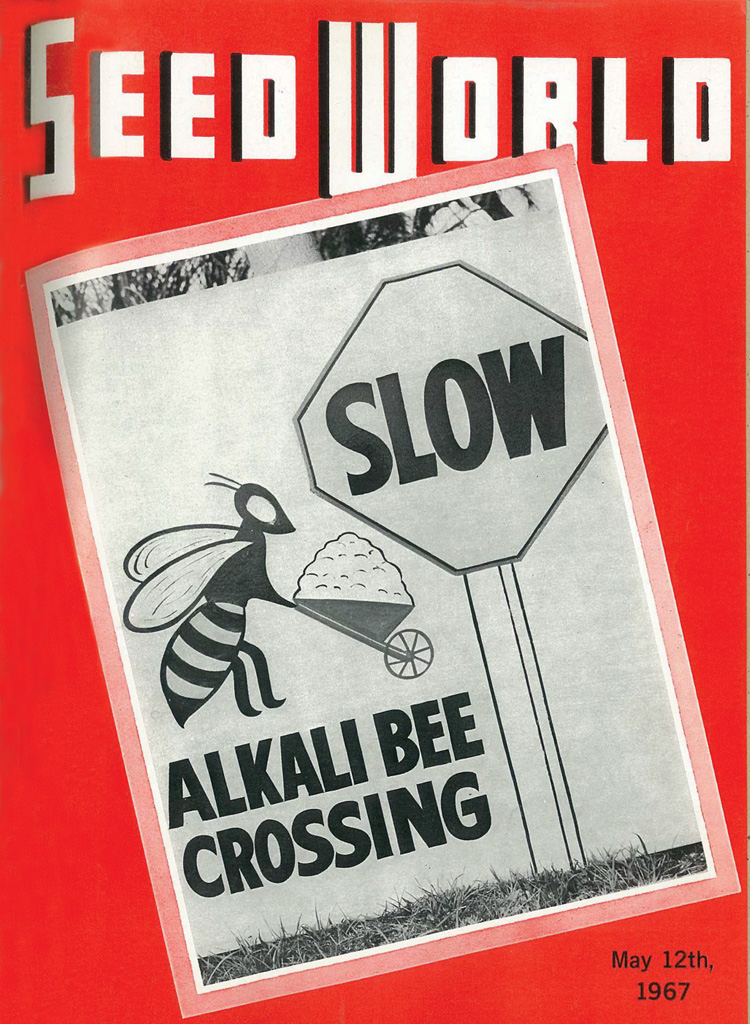A Moment in Time
Pictured here: “The alkali bee, a lightweight champion with complete disregard for hard blows on the chin, is helping seed growers attain better alfalfa seed yields.” The picture shows one of the roadside signs which were then beginning to make their appearance near the “man-made alkali bee beds” in the San Joaquin Valley. The seed fields on both sides of the road drew the bees and many of them had been killed by speeding motorists as they crossed they highway. The females of this species are clever engineers. They dig their nests in moist soils that are sufficiently adhesive to retain their form after the bees work. This aggressive bee seems to laugh at punches dealt by the triggered stamen of the alfalfa blossom, which many bees prefer to avoid.
Facts and Figures From this 1967 Issue
4 to 6 is the number of weeks the mother alkali bee goes about digging and provisioning her egg cells.
4 to 5 is the number of hours per day the female alkali bee works.
95 is the percentage of all alfalfa flowers visited that the female alkali bee “trips” each day.
1,000 is the average number of blossoms a worker alkali bee “trips” in a day.
4 inches is the length of the alkali bee’s nest dug vertical to the soil surface.














